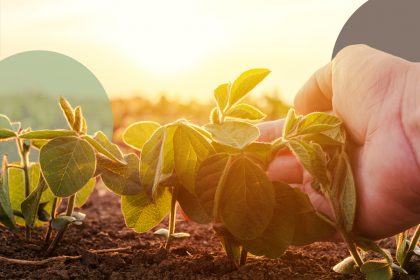Hi readers!
This is the last episode of the ongoing series and is all about
Desert Agriculture
Deserts cover more than one-fifth of Earth’s land area, and they are found on every continent. The Thar Desert covers an area of 175,000 square kilometers and is the largest desert of Pakistan.
The Cholistan desert, or Rohi, is the western part of the Thar desert which lies in modern Pakistan. This area was once watered by the Hakra river and was home to an Indus Valley culture based on agriculture.
The Ghaggar-Hakra River is intermittent in India and Pakistan that flows only during the monsoon season. It is known as Ghaggar Hakra River (before the Ottu barrage in Haryana state of India that creates a large water reservoir) and as Hakra river downstream of the barrage in the Thar Desert.
In pre-Harappan times, Ghaggar was a tributary of the Sutlej river which flows in monsoon season. Since both Hakra and Sutlej are flowing today, it is possible that water seeped around both can be pumped out to be used for irrigation in the Cholistan desert as previously used to be
Somebody might have tested it?
Agriculture in both Cholistan and Thar deserts, is challenging due to harsh conditions but some crops and livestock are still viable, including gram (Chickpea: we have been growing this in dry areas) in Thal, and livestock like sheep, goats, and camels in Cholistan, with some areas focusing on saline agriculture and aquaculture (both can be widely adopted in Cholistan if somebody wished so).
Many innovative technologies can be used in desert environments, including net houses, hydroponic and drip irrigation systems (latter is most feasible, we have used all these technology successfully), which can increase crops productivity and decrease water and energy use. If these technologies can be integrated with local knowledge through local farmers, impact could be significantly more than any individual intervention.
But before such intervention, it is imperative to address challenges of sustainability of vulnerable desert agriculture, which is gravely threatened by climate change, inappropriate land management practices, extreme temperatures, low soil fertility, water scarcity, salinity, wind erosion, and high evaporation rates that collectively present a bleak picture of desert agriculture.
Despite these threats, decades of research and technological development has made great progress in desert agriculture which is no longer confined to isolated patches but has expanded into degraded desert lands that were previously considered unfit for food production. This is largely due to the development of protected agriculture (PA) technology and practices developed by International Center for Agricultural Research in the Dry Areas , commonly known as ICARDA.
PA used structures and technologies to modify natural environment surrounding the crops, aiming to enhance yields, quality, and extend the growing season by controlling temperature, rainfall, humidity, and wind.
We have Baarani Agriculture Research Institutes (commonly known as BARI working under the umbrella of Ayub Agriculture Institute (AARI). I am not sure how much of these structural modification they have been or are currently using? Ask them if anyone can as I am not aware of their work.
The breakthroughs in desalination technology, renewable (solar) energy, water-saving technology, and greenhouse systems, has enabled food production in the most barren soils under the harshest conditions.
Desert farming can be very successful if it includes cultivation of trees like date palms, forages, rehabilitation of areas occupied by native herbaceous or shrubby vegetation and converting them into productive areas through grazing management, re-seeding, and water harvesting, to enhance soil cover and vegetation, and ultimately improve land productivity and sustainability.
Growing crops under controlled environmental conditions within greenhouses and net houses (I have been working on this throughout my active career) and playhouses (controlled environment agriculture involving cultivating crops within polyethylene-covered structures (commonly used for tunnel farming in Pakistan) to provide a stable environment for getting year-round production, regardless of external conditions to optimize plant growth and yield.
Protected agriculture, livestock, and fish production can obtain reasonable funding from the international donors for creating supportive policies to encourage desert farming and helping reduce reliance on food imports.
The lack of rain in the desert is the major obstacle in growing crops and raising livestock that require water for irrigation which can be pumped out from aquifers like Sutlej Hakra rivers and should be designed and managed as a long-term and complex integrated agricultural system. Eventually, the concept of circular economy can be introduced to recycle the nutrients between fish, crops, livestock, and soil.
Desert farming can be very successful if the i., public sector is involved to get a research facility for technology development and obtaining funding, ii., private sector for profit driven technology design and iii., know-how of desert community, which is the most vital component.
Dear readers, in a series of 3 blogs, efforts have been made to describe in detail various types of agriculture, what is being practiced in the world, what is required in Pakistan and what is easy to adopt and how? It is up to those who are interested in increasing agricultural productivity in Pakistan, what they are looking for? what suits them? and what they prefer to choose? I wish them the best of luck. I have done my job.
See you next week. Take care, Bye.





